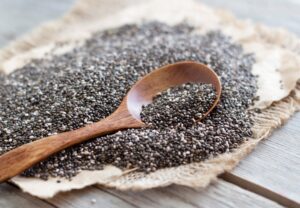By Jeffrey Carrico, MD, Medical Director, Recovery Works Mayfield in Kentucky. Pinnacle Treatment Centers has a total of 10 Recovery Works centers in Indiana, Kentucky, and Ohio, that provide detox, residential treatment, and partial hospitalization/intensive outpatient programs with recovery homes.

Stimulants have been used for centuries. The Mayans, Aztecs, and Incas used coca and cacao frequently as stimulants. The Olmec started using cacao more than 4,000 years ago and were the first to turn it into chocolate. Many of the stimulants of today started as plants used for medicinal purposes.
Many stimulants, when used in moderation, can be harmless and even helpful, but the world of stimulant drugs does have its dark side, and some stimulants should never be used.
The Definition of Stimulant Drugs
A drug is any substance that has a physiological effect when introduced into the body. When you wake up with a cup of coffee or enjoy the euphoric feeling from that chocolate bar, you’re feeling the effects of the drugs contained therein. Stimulant drugs are drugs that excite the brain and nervous system.
How are Stimulants Ingested?
Whether legal or illicit, stimulants are usually:
- Swallowed
- Snorted
- Smoked
- Injected
Examples of Legal Prescription Stimulants
As with many street drugs, stimulants started out with legitimate medicinal purposes. They are commonly used to help with the treatment of ADHD and narcolepsy and include:
- Dextroamphetamine (Dexedrine®)
- Dextroamphetamine/amphetamine combination (Adderall®)
- Methylphenidate (Ritalin®)
- Prescription stimulant drugs can also be used for weight loss in people who are overweight or obese. Many of them have been approved for long-term use, including Lorcaserin (Belviq®) and Phenterminetopiramate (Qsymia®).
Examples of Illegal Stimulant Drugs
The illegal stimulants most commonly used include:
- Cocaine
- Crack
- Amphetamines
- Methamphetamine
- Ecstasy
Continuing with the common thread, cocaine and amphetamines were originally used medicinally. As a matter of fact, cocaine was once called the “wonder drug.” But their addictive properties have made both unsafe for use in any situation.
It is important to remember that any prescription drug becomes illegal when:
- Taken in a way other than prescribed
- Taken in a dose other than prescribed
- Taken by anyone other than the prescribed patient
Common Legal Stimulants
Just because a stimulant is legal doesn’t mean it’s good for you. A couple of prominent examples are cigarettes and energy drinks. If you’ve pulled an all-nighter with some NoDoz and some Water Joe, you are probably aware of the after-effects of that much caffeine over a lengthy period of time.
A number of products are safe in moderation but can become harmful if consumed in excess or if a person has a sensitivity to stimulants. Coffee and matcha green tea are obvious examples, but did you know that cinnamon is a stimulant? And who knew chia seeds are a stimulant and becoming all the rage among everyone from Wall Street professionals to long-distance runners?
Is Alcohol a Stimulant?
While alcohol may lower inhibitions and make you feel like the life of the party for a time, alcohol is a depressant, making it the opposite of a stimulant. It works by depressing or slowing down the central nervous system —“turning off the brain,” so to speak.
The rush of dopamine may make it seem like a stimulant at first, but unlike stimulants, alcohol slows down cognitive functions, reaction times, thought processes, and speech.
The Short-Term Side Effects of Stimulant Drugs
When stimulants are ingested, the receptors of the brain produce dopamine, also referred to as DA. This is the feel-good, euphoric reaction that drives people to use stimulants. But there are very real negative results as well. The immediate short-term effects include:
- Rapid heart rate
- Rise in blood pressure
- Increased body temperature
- Dilation of pupils
- Heightened, yet scattered, awareness
- Nausea
- Loss of appetite
- Wakefulness/disturbed sleep patterns
- Mood swings
- Panic, anxiety, and psychosis
The Long-Term Risks of Stimulant Drugs
Stimulants are extremely addictive. Cocaine is believed to be one of the most addictive substances on the planet. Meth will imprison most after a single-use. Long-term effects include:
- Permanent damage to blood vessels
- Kidney, liver, and lung damage
- Destruction of tissue at the site of ingestion (nose if inhaled, or the skin around the injection site)
- Respiratory illness and severe tooth decay if smoked
- Malnutrition
- Infection
- Disorientation, even between uses
- Psychosis
- Brain damage
- Death
Common Street Names for Stimulant Drugs
Stimulants as a drug classification are referred to as “uppers” or “speed.” When it comes to the street names for various uppers, the list is as extensive as it is inventive.
- Amphetamines
- Addies
- Beans
- Black beauties
- Pep pills
- Dexies
- Zing
- Study buddies
- Smart pills
- Cocaine
- Coke
- Blow
- Rock
- Crack
- Yayo
- Snow
- Sniff
- Sneeze
- White
- Nose candy
- Toot
- Line
- Dust
- Flake
- Ecstasy
- X
- E
- XTC
- Molly
- Rolls
- Hug drug
- Love drug
- Lover’s speed
- Adam
- Eve
- Clarity
- Moon rocks
- Dancing shoes
- Scooby snacks
- Candy
- Peace
- Methamphetamine
- Crystal
- Meth
- Cristy
- Tina
- Crank
- Crissy
- Tweak
- Glass
- Ice
- Shards
- Go
- Whizz
- Chalk
Users will also give their drug of choice a common, everyday name, so as to be able to speak freely about it in front of others. For example, a phone call to a dealer may sound something like this: “Hey, is your Aunt Bernice in town?” The caller is asking if the drug they want, “Aunt Bernice,” is currently available.
More Than the High: What Are Stimulant Drugs Used For?
Unfortunately, there are a number of reasons that people turn to stimulants, even beyond getting high. It is not uncommon for people to use cocaine or amphetamines as a means to:
- Be more productive
- Enhance performance
- Lose weight
These drugs can be psychologically addictive because of the valuable “benefits” they provide. For many users, this drug use is driven by a poor self-image. They’re trying to make themselves “better.”
The Negative Effects of Stimulant Drugs
We have already addressed the physical and psychological effects on the stimulant user, but what about the people and community surrounding them? In 2015, amphetamine-related hospital costs reached an astounding $2.17 billion. Stimulant-related offenses account for more than 75% of all federal drug offenses.
In 2016, daily users of cocaine and methamphetamine spent approximately $51 billion to support their habit.
There is also the devastating interpersonal cost: relationships ripped asunder; marriages destroyed; lifelong friends becoming strangers; children, spouses, and other loved ones mistreated or neglected. You cannot put a price tag on these costs.
Pinnacle Treatment Centers Can Help
If you or a loved one is suffering from stimulant or any other type of drug addiction, Pinnacle Treatment Centers can help. We have treatment facilities in states throughout the country and are experienced at helping the addicted experience the freedom of recovery.
Call, text, or send us a message today. We can help.


